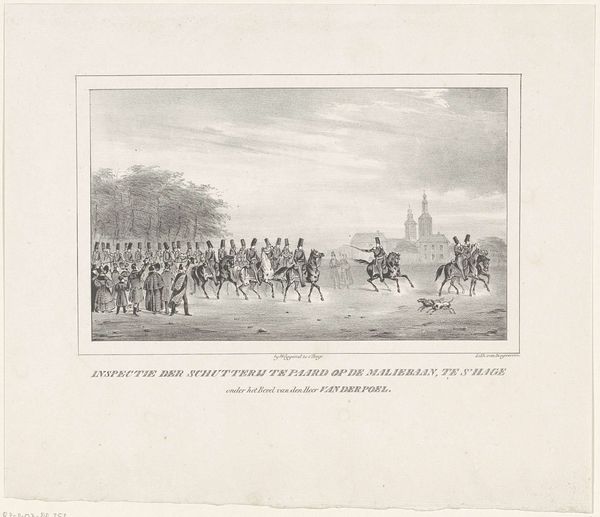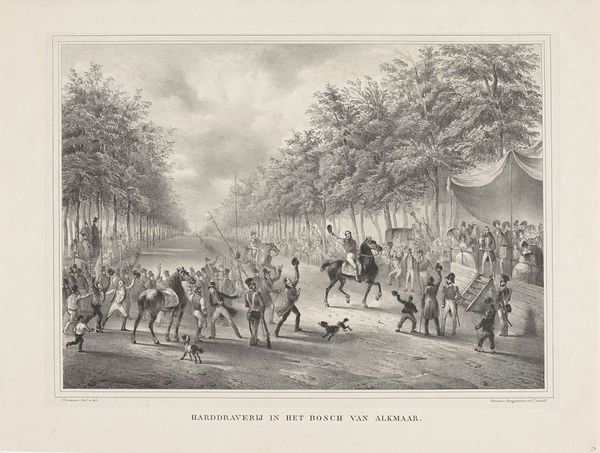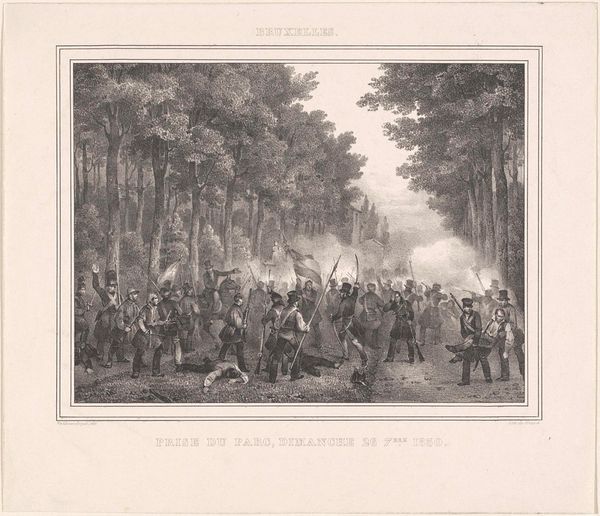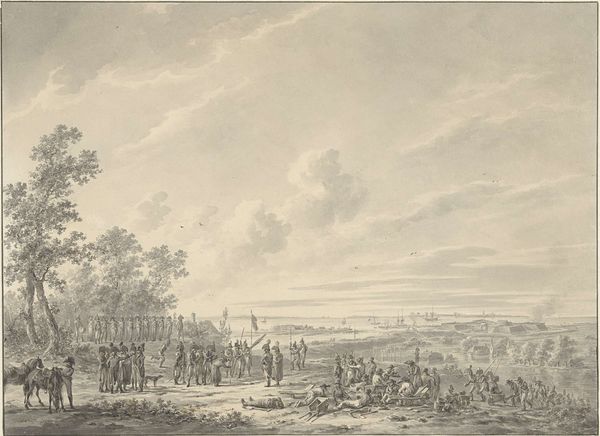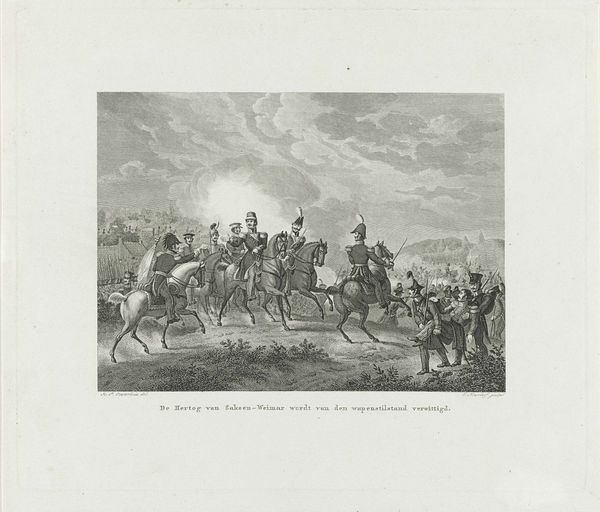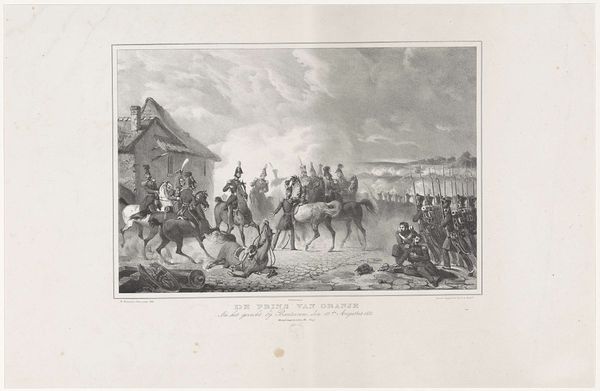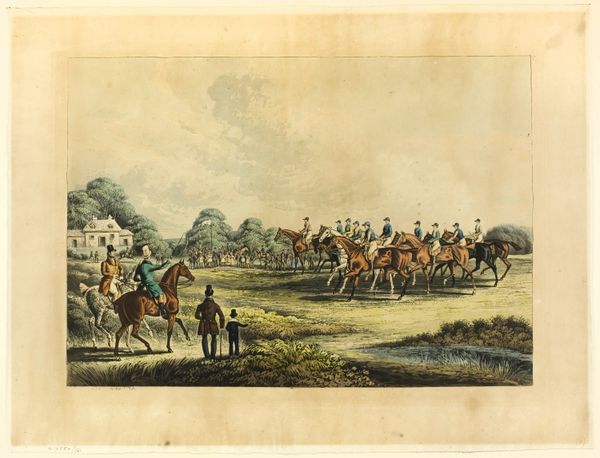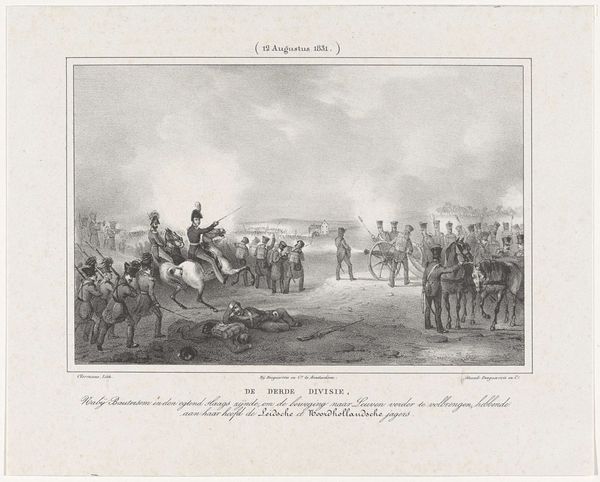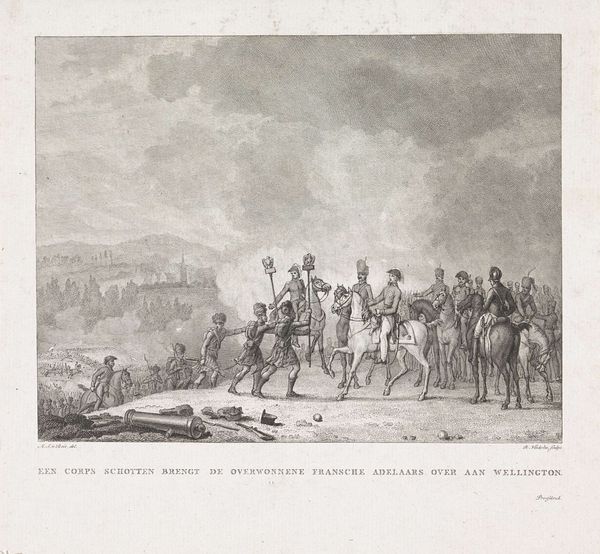
Inspectie van Z.M. den Koning Willem II, der dienstdoende schutterij van 's Gravenhage. 23 Mei 1848 1848
0:00
0:00
print, engraving
#
pencil drawn
#
light pencil work
# print
#
pencil sketch
#
light coloured
#
pencil work
#
genre-painting
#
history-painting
#
engraving
#
realism
Dimensions: height 471 mm, width 557 mm
Copyright: Rijks Museum: Open Domain
Carel Christiaan Antony Last created this print, Inspectie van Z.M. den Koning Willem II, in 1848, using a technique called lithography. This process involves drawing with a greasy crayon on a flat slab of limestone, then treating the stone so that ink adheres only to the drawn areas. The printmaker then transfers the image to paper. Lithography enabled the relatively quick and inexpensive reproduction of images, making art more accessible. Notice the even tonality and fine lines, which suggest a steady hand and careful labor. But lithography, even though it requires specific skills, was also geared to the multiplication of images. It reflects the rise of industrial production and consumer culture in the 19th century. Consider how this print, depicting a formal military inspection, is itself a product of a rapidly changing society, where even traditions were subject to the forces of mechanization and mass production. It prompts us to think about how art, even when seemingly traditional, is always enmeshed with the social and economic conditions of its making.
Comments
No comments
Be the first to comment and join the conversation on the ultimate creative platform.
